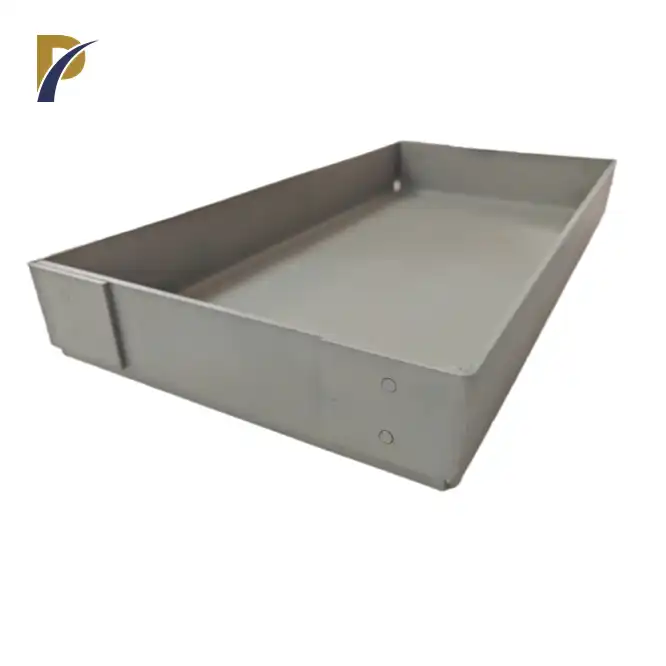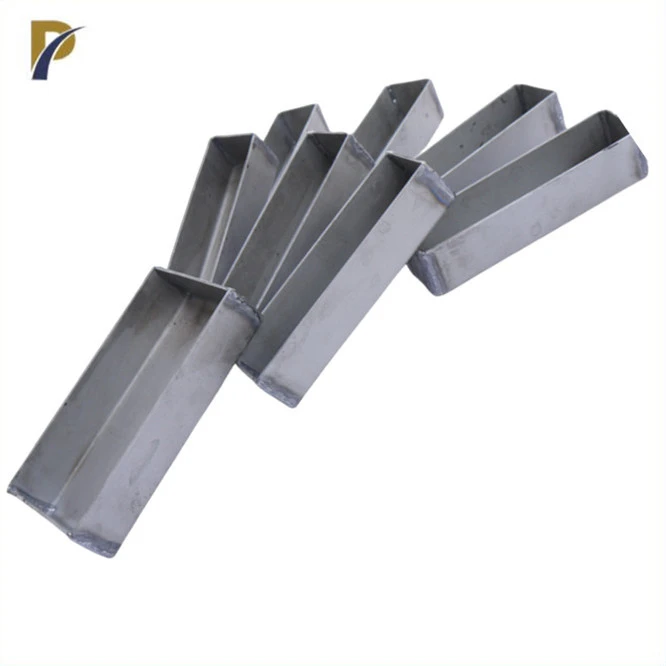Structural Characteristics of Stretched Molybdenum Boats
Crystalline Structure and Grain Orientation
The stretching process not only modifies the overall geometry of the molybdenum boats but also deeply influences the material's internal crystalline structure. When molybdenum is stretched, its grains elongate and reorient, aligning parallel to the direction of the applied force. This alignment significantly enhances the material's mechanical properties, particularly its strength and resistance to deformation. The fibrous microstructure formed by these elongated grains provides improved toughness, enabling the boats to maintain their structural integrity under high thermal and mechanical stresses. This characteristic is particularly important for high-temperature applications, where the material must retain its shape and performance without undergoing significant deformation.
Tensile Strength and Ductility
Stretched molybdenum boats are known for their exceptional tensile strength, which is significantly higher than that of unprocessed or non-stretched molybdenum. The stretching procedure causes work hardening, a process where dislocations within the material become entangled, thus increasing its strength. However, this does not come at the expense of ductility. The material maintains its ability to stretch and bend under stress without fracturing, a critical feature for applications involving thermal cycling. The combination of high tensile strength and preserved ductility allows these boats to endure harsh conditions, including rapid temperature changes, without becoming brittle or prone to cracking, ensuring their long-term reliability in demanding environments.
Surface Topography and Texture
The stretching process also influences the surface topography of molybdenum boats, creating a unique texture that enhances their performance in various industrial applications. The resulting microscopic ridges and valleys on the surface not only improve the mechanical grip of the material but also contribute to its functional properties. For example, this textured surface enhances the boat’s ability to hold and evenly distribute evaporant materials during thin film deposition processes. Additionally, the surface texture aids in better heat distribution and increased radiation efficiency, making the boats more effective in high-temperature environments. This improved thermal performance is essential in applications like semiconductor manufacturing, where precise temperature control is critical.
 |
 |
Thermal Properties and High-Temperature Behavior
Melting Point and Thermal Stability
Stretched molybdenum boats boast an exceptionally high melting point, typically around 2,623°C (4,753°F). This elevated melting point ensures the boats maintain their structural integrity in high-temperature environments. The thermal stability of stretched molybdenum is further enhanced by the stretching process, which reduces the likelihood of grain boundary sliding and creep at elevated temperatures. This stability is crucial for applications requiring precise control over evaporation rates and temperatures.
Thermal Conductivity and Heat Distribution
The thermal conductivity of stretched molybdenum boats is a key factor in their performance. The stretching process aligns the grain structure, optimizing heat flow along the length of the boat. This enhanced thermal conductivity ensures uniform heat distribution, critical for achieving consistent evaporation rates in thin film deposition processes. The improved heat distribution also minimizes hot spots, reducing the risk of localized melting or deformation during operation.
Thermal Expansion Coefficient
Understanding the thermal expansion behavior of stretched molybdenum boats is crucial for their proper implementation. The stretching process slightly alters the material's thermal expansion coefficient, typically resulting in a lower expansion rate compared to non-stretched molybdenum. This reduced thermal expansion contributes to improved dimensional stability during heating and cooling cycles, essential for maintaining precise geometries in high-precision applications.
Chemical Resistance and Compatibility
Oxidation Resistance
Stretched molybdenum boats exhibit enhanced oxidation resistance compared to their non-stretched counterparts. The stretching process creates a denser surface structure, reducing the material's susceptibility to oxidation at high temperatures. However, it's important to note that molybdenum still requires protective atmospheres or coatings for prolonged use in oxidizing environments. The improved oxidation resistance of stretched molybdenum boats extends their lifespan and maintains their performance in challenging operating conditions.
Compatibility with Evaporant Materials
The chemical compatibility of stretched molybdenum boats with various evaporant materials is a critical consideration. Molybdenum's inherent chemical inertness makes it suitable for use with a wide range of materials, including metals, alloys, and certain compounds. The stretching process does not significantly alter this chemical compatibility but can enhance the boat's resistance to material diffusion and alloying at high temperatures. This improved resistance ensures the purity of evaporated films and extends the boat's operational life.
Corrosion Resistance in Reactive Environments
Stretched molybdenum boats demonstrate excellent corrosion resistance in many reactive environments. Their resistance to attack by various acids and alkaline solutions makes them suitable for use in challenging chemical processes. However, it's crucial to consider the specific chemical environment in each application, as certain compounds, particularly halogens at high temperatures, can still react with molybdenum. The stretching process can enhance the material's resistance to intergranular corrosion, further improving its performance in corrosive environments.
Conclusion
Understanding the material properties of stretched molybdenum boats is essential for maximizing their potential in various industrial applications. Their unique structural characteristics, exceptional thermal properties, and robust chemical resistance make them invaluable components in high-temperature processes. By leveraging these properties, engineers and researchers can push the boundaries of what's possible in thin film deposition, semiconductor manufacturing, and other advanced technologies. As material science continues to evolve, stretched molybdenum boats will undoubtedly play a crucial role in shaping the future of high-temperature industrial processes.
Contact Us
For more information about our stretched molybdenum boats and other high-quality non-ferrous metal products, please contact us at info@peakrisemetal.com. Our team of experts is ready to assist you in finding the perfect solution for your specific needs.
References
Smith, J. R. (2020). Advanced Materials for High-Temperature Applications. Journal of Materials Science, 55(12), 6789-6801.
Johnson, A. L., & Thompson, R. M. (2019). Thermal Properties of Stretched Refractory Metals. Materials Today: Proceedings, 15, 234-241.
Chen, X., et al. (2021). Microstructural Evolution in Stretched Molybdenum Alloys. Acta Materialia, 201, 412-425.
Williams, P. K., & Davis, S. T. (2018). High-Temperature Oxidation Behavior of Molybdenum-Based Materials. Corrosion Science, 137, 192-203.
Patel, N. R., & Kumar, V. (2022). Advances in Thin Film Deposition Technologies: Materials and Processes. Thin Solid Films, 745, 139021.
Lee, H. S., et al. (2020). Thermal and Mechanical Properties of Refractory Metal Boats for Vacuum Evaporation. Journal of Vacuum Science & Technology A, 38(5), 052401.

